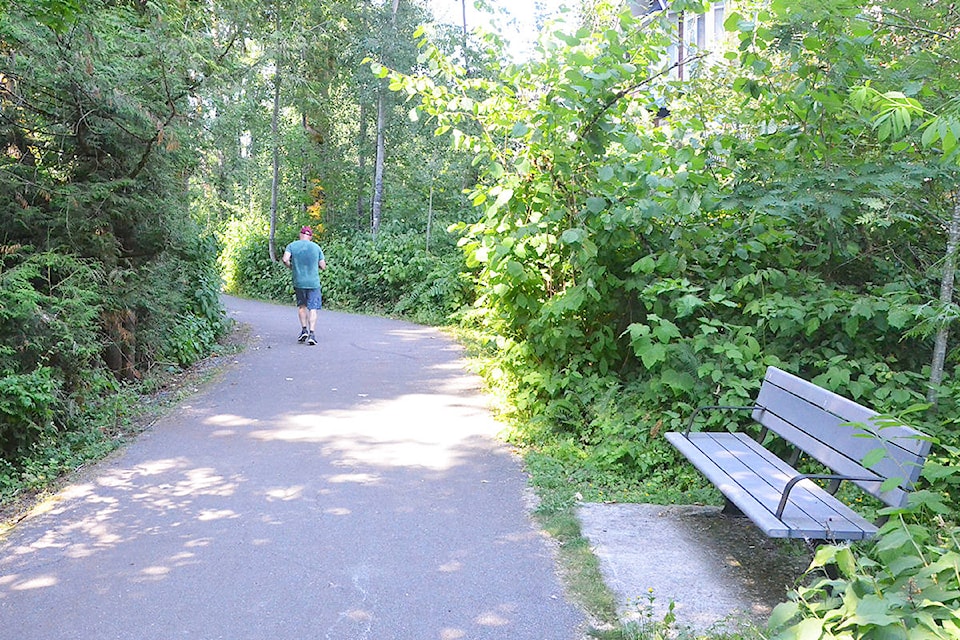One of the best defences against extreme heat is a canopy of trees – and growing more trees in Langley Township is part of the long term plan to deal with climate change.
Research shows that tree canopies keep temperatures down, and so does personal experience, said Nichole Marples, executive director of the Langley Environmental Partners Society (LEPS).
“As soon as you walk into a forested area, you can feel that temperature drop,” she said.
Trees provide shade, but they also transpire – a process in which trees slowly release water vapour, which helps keep forested areas cooler.
Adding more trees is part of the Township’s plan to deal with the climate change crisis.
That crisis is top of mind in Langley after the heat wave during the last weekend of June that pushed temperatures in Langley above 40 degrees Celsius.
“It definitely underlines the need to plan for future climates, not past climates,” Marples said.
Councillor Blair Whitmarsh is the chair of the Tree Protection Advisory Committee.
“One of the goals will be to look at increased tree canopy around the community,” he said.
The committee had a public input session in June and more session on the Community Forest Management Strategy are planned for this fall.
The goal is to get a report back to the council by late this year or early 2022 on the next moves the Township can make on trees, Whitmarsh said.
In January this year, the Township council approved a plan with five “big moves” and dozens of small actions that was designed to slash carbon emissions and energy use across the municipality, while trying to make the community more resilient to rising temperatures and unpredictable weather.
READ MORE: Plan to fight climate change gets nod from Langley Township council
One of the big moves is “Resilient Natural Systems,” which includes increasing both the tree canopy and rainwater captured by ground cover.
Among the plans are:
• Complete a tree canopy study and strategy, aimed at reducing the urban “heat island” effect, lower the amount of energy needed to cool buildings, improve carbon sequestration, and improve local biodiversity
• Implement shading features, including trees, for public parks, greenways, and transportation corridors
• Develop a tree voucher program for private properties that could use subsidies to encourage private landowners to plant more trees
• Update the list of trees and shrubs suggested for developers to plant to ensure they are species that can adapt to future climate conditions
Marples noted that trees aren’t immune to heat waves. She’s seen signs of browning and stress on conifers around Langley since the heat wave hit.
With time, those trees will recover, Marples said. But repeated heat waves like that could have an impact on the forests we take for granted.
Langley City also acknowledged climate change as an emergency this year, and that resolution is expected to guide the future plans for the Nicomekl River area, one of the city’s greenest regions.
READ MORE: Langley City declares a climate emergency
